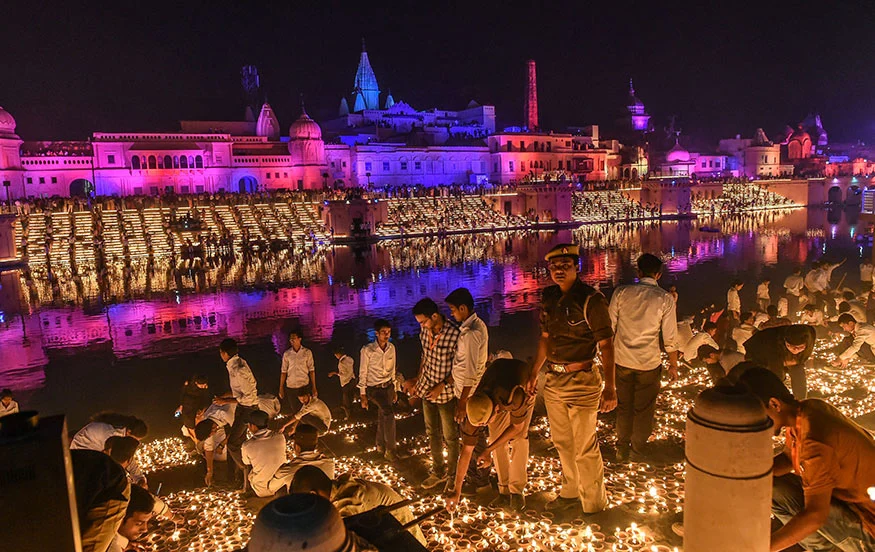Table of Contents:
- Introduction to Ayodhya’s Archaeological Richness
- The Ram Janmabhoomi Site: Historical and Archaeological Significance
- Hanuman Garhi: A Blend of Mythology and History
- The Discoveries at Guptaar Kothi
- Mani Parvat: An Archaeological and Religious Marvel
- The Excavations at Swarg Dwar
- Visiting Guidelines and Preservation Efforts
- FAQs for Travelers
1. Introduction to Ayodhya’s Archaeological Richness
Ayodhya, an ancient city with deep roots in Indian history and mythology, is a treasure trove for archaeologists and history enthusiasts. The city’s layers of history, from the times of the epic Ramayana to well into the medieval and modern periods, are evident in its numerous archaeological sites. Exploring these sites offers a glimpse into the rich cultural and historical fabric of Ayodhya.
- Ayodhya is an archaeological treasure trove.
- Its sites span a vast period from ancient to modern times.
2. The Ram Janmabhoomi Site: Historical and Archaeological Significance
The Ram Janmabhoomi site, believed to be the birthplace of Lord Ram, is among Ayodhya’s most significant archaeological sites. Excavations here have unearthed artifacts and ruins that point to a long history of occupation and religious significance. The findings include ancient structures, sculptures, and various objects that provide insights into the city’s past.
- The site is believed to be Lord Ram’s birthplace.
- Excavations have revealed artifacts and structures with religious significance.
3. Hanuman Garhi: A Blend of Mythology and History
Hanuman Garhi, a temple dedicated to Lord Hanuman, is not only a place of worship but also an important archaeological site. The temple complex is built atop a hill and is surrounded by remnants of ancient structures and artifacts that reflect the site’s historical and mythological importance.
- A significant temple with archaeological importance.
- The site includes ancient structures and artifacts.
4. The Discoveries at Guptaar Kothi
Guptaar Kothi, an archaeological site in Ayodhya, has been a focus of several excavations. These digs have uncovered a wealth of information about Ayodhya’s past, revealing remains of ancient temples, sculptures, and inscriptions. These findings have helped historians piece together the city’s historical timeline.
- A key site for excavations in Ayodhya.
- Findings include temples, sculptures, and inscriptions.
5. Mani Parvat: An Archaeological and Religious Marvel
Mani Parvat is an ancient mound that holds both archaeological and religious importance. Archaeological studies here have uncovered evidence of ancient settlements and structures. The site also holds a religious significance, with several legends associated with it in Hindu mythology.
- An ancient mound with archaeological and religious significance.
- Studies have revealed evidence of ancient settlements.
6. The Excavations at Swarg Dwar
Swarg Dwar, another important archaeological site in Ayodhya, is believed to be the place where Lord Ram took Jal Samadhi. Archaeological excavations have revealed various artifacts that provide a link to the city’s ancient history and its association with Hindu mythology.
- Believed to be the site of Lord Ram’s Jal Samadhi.
- Excavations have revealed artifacts linking to ancient history and mythology.
7. Visiting Guidelines and Preservation Efforts
Visitors to Ayodhya’s archaeological sites are encouraged to follow guidelines to ensure the preservation of these historical treasures. It’s important to respect the sites by not disturbing the artifacts and adhering to the rules set by the authorities. The preservation efforts by the archaeological departments play a crucial role in maintaining these sites for future generations.
- Follow guidelines to help preserve these historical sites.
- Non-disturbance of artifacts and adherence to rules are crucial.
8. FAQs for Travelers
- What is the significance of the Ram Janmabhoomi site?
- Believed to be the birthplace of Lord Ram with significant archaeological findings.
- Can I visit the excavation sites in Ayodhya?
- Yes, but access may be limited to certain areas for preservation purposes.
- Are there guided tours available for these archaeological sites?
- Guided tours are available, offering detailed historical insights.
- What kind of artifacts have been found in Ayodhya?
- Artifacts include ancient structures, sculptures, inscriptions, and objects of religious importance.
- Is photography allowed at these archaeological sites?
- Photography rules vary by site; it’s advisable to check at each location.
- How much time should I allocate for visiting these sites?
- A full day or more is recommended to explore multiple sites thoroughly.
- Do I need to pay an entry fee for these sites?
- Some sites may have an entry fee, while others are free to visit.
- What should I wear and bring when visiting these sites?
- Comfortable walking shoes and modest clothing are recommended, along with water and sun protection.
Conclusion: The archaeological sites of Ayodhya provide a fascinating journey through India’s ancient past. Exploring these sites not only unveils the city’s historical and religious significance but also connects visitors to the deep-rooted traditions and stories that have shaped Ayodhya over millennia. These sites are more than just tourist attractions; they are windows into a past that continues to influence and inspire the present and future. For anyone interested in history, archaeology, or religion, Ayodhya’s archaeological sites offer an invaluable and unforgettable experience.
- The archaeological sites of Ayodhya offer a unique journey through India’s ancient history.
- They connect visitors to the city’s rich historical and religious heritage.


